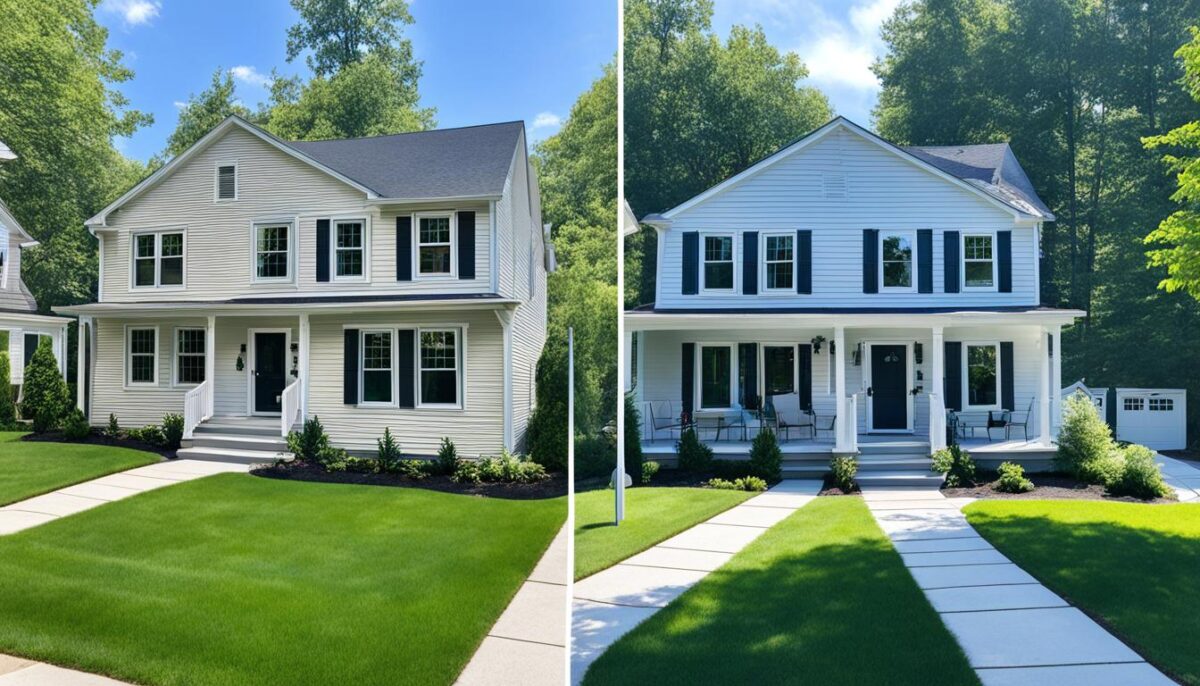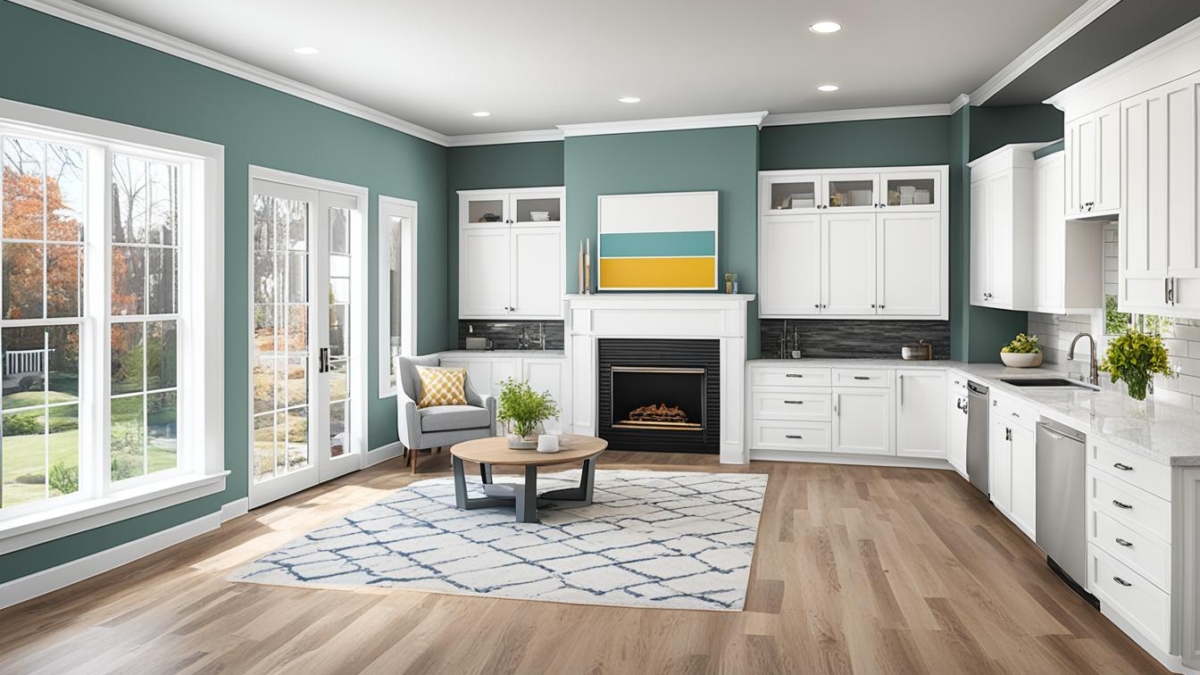Welcome to our guide on the 30% rule in home renovations! If you’re considering upgrading your living space, it’s crucial to have a solid budget in place to avoid overspending and maximize the value of your property. That’s where the 30% rule comes in.
The 30% rule is a principle that helps homeowners determine an appropriate budget for their renovation projects. By following this rule, you can strategically allocate your funds to achieve the best results within your financial means.
In this article, we will dive deeper into understanding how the 30% rule works and how it can benefit your home renovation plans. We’ll also share some valuable tips for successfully implementing this rule to ensure a successful and cost-effective project.
So, if you’re ready to enhance your home without breaking the bank, let’s explore the 30% rule and how it can transform your property into the dream space you’ve always envisioned.
Understanding the 30% Rule for Budgeting Home Renovations
When it comes to budgeting for home renovations, understanding the 30% rule can be a game-changer. This rule is a useful guideline that helps homeowners allocate their funds wisely, ensuring that they don’t overspend while still achieving their renovation goals. By following this rule, homeowners can make informed decisions about where to invest their money and maximize the value they get from their renovation projects.
So, what exactly is the 30% rule? Simply put, it suggests that homeowners should spend no more than 30% of their home’s current value on renovations. For example, if your home is valued at $300,000, the recommended budget for your renovation project would be $90,000 (30% of $300,000).
Adhering to the 30% rule helps homeowners maintain a balance between their renovation ambitions and their financial capabilities. It prevents overspending, which can lead to unnecessary debt or financial strain. By setting a budget based on this rule, homeowners can prioritize their renovation goals, focus on areas that truly need improvement, and avoid unnecessary expenses.
It’s important to remember that the 30% rule is a guideline, not a rigid rule. Every homeowner’s situation is unique, and it’s crucial to consider various factors such as personal preferences, long-term goals, and the real estate market conditions in your area when determining your renovation budget.
By understanding the 30% rule, homeowners can take a more strategic approach to budgeting for their renovation projects. They can assess their home’s current value, research the costs associated with the desired renovations, and make informed decisions about where to allocate their funds.
Benefits of the 30% Rule:
- Helps homeowners avoid overspending and financial strain
- Allows for better prioritization of renovation goals
- Encourages strategic decision-making in allocating renovation funds
- Ensures a balance between investment and return on investment
By following the 30% rule, homeowners can embark on their renovation journey with confidence, knowing that their budget is in line with their home’s value and their personal financial situation. It’s a valuable tool that provides clarity and direction, ultimately leading to successful and satisfying home renovations.

Maximizing Property Value with the 30% Rule
When it comes to home renovations, one of the key goals for homeowners is maximizing property value. The 30% rule provides a strategic approach to achieve this objective. By understanding how to allocate renovation funds within this guideline, homeowners can make smart choices that not only enhance the aesthetics and functionality of their homes but also increase their overall value.
To effectively maximize property value using the 30% rule, it’s crucial to focus on areas of the home that offer the highest returns on investment. These areas typically include the kitchen, bathrooms, and curb appeal. Updating these spaces can have a significant impact on the overall value of a home, attracting potential buyers and increasing its marketability.
When prioritizing renovations within the 30% guideline, it’s essential to consider the long-term benefits and potential resale value. For example, upgrading kitchen appliances, countertops, and cabinets can not only provide a fresh and modern look but also attract buyers who value a contemporary and functional kitchen. Similarly, enhancing the functionality and aesthetics of bathrooms, such as updating fixtures and improving storage, can significantly increase property value.

In addition to these key areas, investing in improving the curb appeal of a home is also crucial. Enhancing the exterior features, such as landscaping, entryways, and windows, can create a positive first impression and increase the overall desirability of the property.
Focusing on Quality and Professionalism
It’s important to note that achieving maximum property value with the 30% rule goes beyond selecting the right renovations. Hiring experienced contractors and professionals is vital to executing the renovations properly and ensuring the highest quality of workmanship. Working with professionals who understand the market trends and possess the necessary expertise can help homeowners make informed decisions and achieve the desired results.
By using the 30% rule as a guideline and prioritizing renovations in areas that provide the greatest return on investment, homeowners can increase their property value significantly. However, it’s essential to remember that each property is unique, and individual factors such as location, market conditions, and personal preferences should also be considered when planning and executing renovations.
Tips for Successfully Implementing the 30% Rule
Implementing the 30% rule in your home renovations can be a game-changer when it comes to budgeting wisely and achieving successful results. Here are some practical tips to help you make the most of this rule:
1. Define your priorities: Before diving into any renovation project, take the time to identify your priorities. Determine which areas of your home require immediate attention and focus your budget accordingly. This will ensure that you allocate your funds wisely and make the most impact.
2. Work with reputable contractors: When it comes to home renovations, working with experienced and reputable contractors is key. Research and interview multiple contractors to find the right fit for your project. Request cost estimates, review past projects, and ask for references to ensure you’re hiring professionals who can deliver quality work within your budget.
3. Plan for unexpected costs: It’s important to remember that not all renovation costs can be predicted upfront. Set aside a contingency fund of around 10% of your overall budget to account for any unexpected expenses that may arise during the renovation process. This will help you stay on track and minimize the risk of going over budget.
4. Stay true to your style and goals: While the 30% rule is a helpful guideline, it’s essential to ensure that your renovations align with your personal style and long-term goals. Consider your design preferences, lifestyle needs, and future plans for the property. This will help you create a home that reflects your unique taste and maximizes its value.
By following these tips, you’ll be well-equipped to successfully implement the 30% rule in your home renovations. Remember to plan ahead, work with reliable professionals, and stay true to your vision. With careful budgeting and strategic decision-making, you can achieve a successful home transformation that enhances both your living space and property value.


Add a Comment